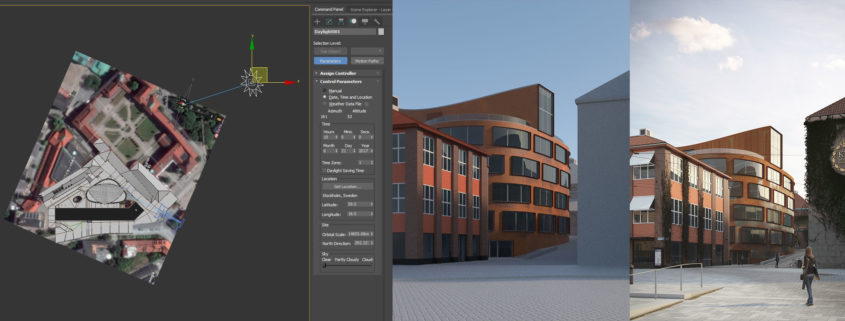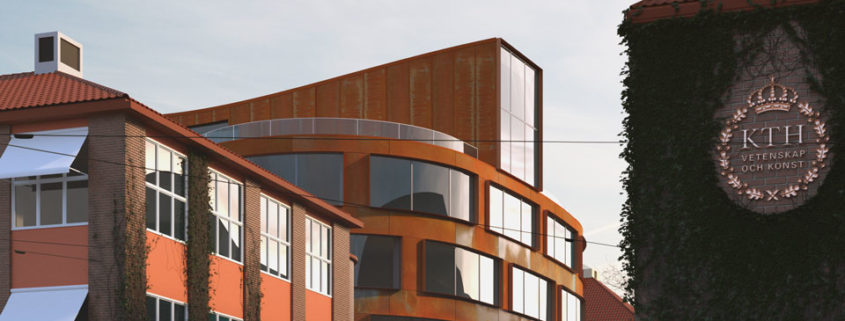Tomorrow Challenge 2018 entry by User-16180394
I promised that I would do a complete writeup of my process before posting my final submission. So here we go.
Since one of the only directions given was that the image should be natural and realistic (a point that I’ll come back to often), I thought it would be a good idea to start by studying the possible positions of the sun. To do that I used a satellite image from Google Maps as reference to find out where the building was pointed to, and then proceeded to use Max’s sun system to find out the position of the sun for Stockholm. I decided that the angle of the sun at 9 in the morning during summer would light and highlight the main building in an interesting way. Also, by positioning the camera close to the angle of incidence of the sun we would be able to see the more reflective parts of the corten steel that haven’t “rusted” out completely yet.
The final render had a V-Ray sun with an HDRI in a dome light. The V-Ray sun was set to a 5 size multiplier to simulate the light of the sun going through the early morning clouds/mist, effectively making the sun’s shadows softer. The HDRI was later added to give that “GI” feel. The sun in the HDRI was positioned in the same general direction as the V-Ray Sun. VRayEnvironmentFog was also used.














